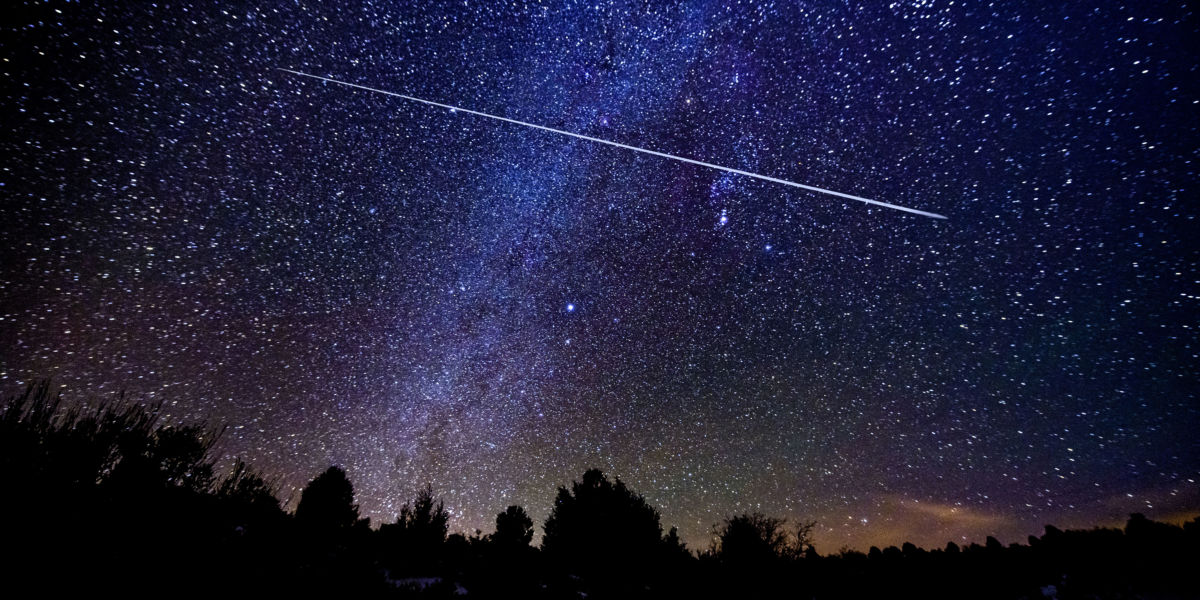
Don’t Miss the Year’s Best Meteor Shower This Weekend
The Geminids peak the night of Dec. 13 and 14. Bundle up and prepare to see up to 120 meteors every hour.

Adventure_Photo/Getty Images
A meteor shower that is a favorite among skywatchers will be at its peak Saturday night and early Sunday morning, so try to find the time to look up at some point that night.
When Is It?
The Geminid meteor shower happens every year between Dec 7 and 17, and every year it reaches its peak on the night of Dec 13/14. It’s a favorite of stargazers because it’s so consistent, reliably producing dozens of bright flashes every hour, and unlike some meteor showers, it’s strong every year. (In fact, it’s a rare show that is apparently increasing in intensity every year.) While the meteors this shower produces aren’t generally as bright as the ones seen during August’s Perseids, it’s prolific. It’s not unusual to see 120 meteors an hour during the peak of the Geminids, and with a nearly moonless night in store on the 13th, it may be possible to pick out even more than that if you’re lucky enough to live in a place with little urban light pollution.
How Can I See It?
To take advantage of Mother Nature’s free light show, you don’t need any fancy equipment. For the best experience, find a dark place with a view of as much of the sky as possible. Open fields are good, as are parking lots and beaches. Though this shower is named after the constellation Gemini, which will be visible to the east, the meteors can appear anywhere in the sky.
The most intense part of any meteor shower is usually after midnight, so try to stay up that late if you can. That’s when you’ll have the best chance of seeing two or more shooting stars a minute. But if you can’t, don’t worry. Late Saturday night might be when the action’s peaking, but you’ll have an above-average chance of catching a streaking meteor any time the sun is down from now through the 17th. The Geminids are also a rare shower where the late-night hours don’t have dramatically more shooting stars than early evening, making this a good one for people who struggle to stay up past their normal bedtimes.
